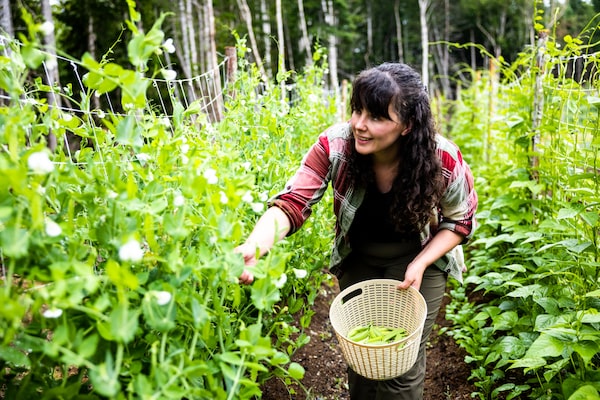
Upper Humber Settlement’s Farm and Forage experience in Cormack, N.L.Tom Cochrane/Handout
In the past few years, foraging – a.k.a., looking for wild food outdoors – has been increasing in popularity, and now that popularity is translating into a new kind of tourism.
On Google, the popularity of the term “foraging” in Canada grew more than 257 per cent between February, 2019, and March, 2022. So, not surprisingly, foraging tourism is gaining popularity right alongside it. Think: folks on vacation seeking out mushroom-hunting excursions, foraging tours paired alongside a cooking class, plant identification walks, and the like.
“There’s something deeply satisfying to that primitive corner of our brain about going out and finding something to eat,” says Dr. Mary Berbee, a professor in the department of botany at the University of British Columbia in Vancouver. “It is just rewarding to be out there looking, enjoying the smells in the woods and then also finding a bright-yellow chanterelle.”
Star chefs Michael Smith of PEI and Ontario’s Shawn Adler put foraged ingredients front and centre in their cooking. Smith, of Food Network Canada fame, employs a full-time forager/chef at his restaurant, the Inn at Bay Fortune. And Adler, who starred in the CBC Life series Forage (now on YouTube) and runs Pow Wow Food, an Indigenous food catering and pop-up company, adds wild ingredients to his menus. At the Inn, Smith has long been moving away from mass-market food systems with an eight-acre culinary farm.
Both chefs are mirroring our collective desire to get back to nature. A 2023 report in the scholarly journal Frontiers in Horticulture attributes the increased interest in foraging to pandemic lockdown repercussions. “The disruption in supply chain grids, as well as food price inflation, resulted in uncertainties for consumers and fuelled their distrust of global food systems,” the report says. “Consumer trends such as buying local, self-sufficiency … community gardening and food foraging have increased in popularity as a direct consequence of these events.”
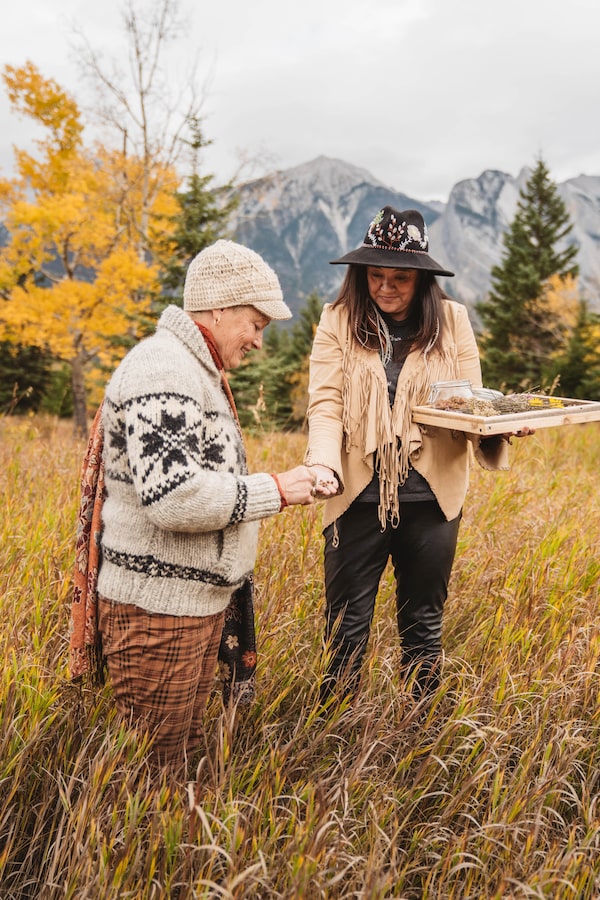
Matricia Bauer, right, is head of Warrior Women, an Alberta-based company that offers a plant walk through Jasper National Park.Handout
Matricia Bauer of Warrior Women, an Alberta-based company that plays host to a number of Indigenous cultural experiences, including a plant walk through Jasper National Park, says there has been at least a 30-per-cent increase in the number of people on her foraging tours since 2019.
As well as giving people the opportunity to connect with nature, foraging offers all the mental and physical benefits associated with that. At its best, foraging can help with the removal of invasive species, and gaining access to foods with unique nutritional or medicinal properties.
Foraging tourism lets travellers connect with like-minded locals or travellers and learn more about the vegetation that’s native to an area. It’s exciting, too.
“There’s a bit of a treasure hunt,” says Berbee. “You never know when you’re going to find something that’s really good.”
However, care and moderation is an important key to sustainability. “Engaging in foraging without the guidance of experts can lead to significant ecological impacts,” says Rebecca Mackenzie, president and chief executive officer of the Culinary Tourism Alliance, a national non-profit food tourism development organization based out of Toronto. She points to overharvesting, disruption of local ecosystems and loss of biodiversity, among others.
There’s also the risk of consuming something that’ll make you sick. “It would be easy for anyone, including me, to make a mistake,” says Berbee. She also cautions that foraged mushrooms can sometimes be high in heavy metals or pesticide residues.
Bauer, of Warrior Women, addresses the issue that companies can profit off of foraging on land that originally belonged to Indigenous groups. “Within the [foraging tourism] industry, there are ethical foraging practices, and within the Indigenous practice there is ‘honourable harvest.’ If humans are following these practices, then there is no cause for concern,” she says. Honourable harvest principles include asking for permission, taking only what you need, leaving some for others and never wasting what you’ve taken.
To choose the right foraging tour company, Mackenzie says to read reviews, make sure the company has safety standards and sustainability practices, insurance and permits to legally operate in the area, plus guides who have a deep understanding of not only botany and food but the local surroundings. Ensure the tour works with smaller groups to allow for a more personalized experience. (She adds that if the foraging tour is tied to Indigenous or local traditions, the company should operate with cultural sensitivity and respect, ideally involving Indigenous communities in a way that benefits them.)
Here are some suggestions for foraging visits across the country.
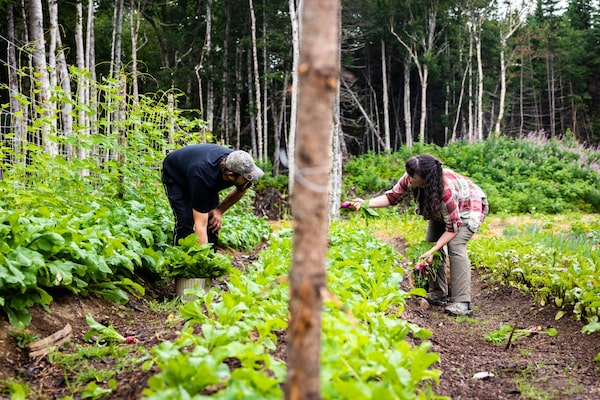
Upper Humber Settlement.Tom Cochrane/Handout
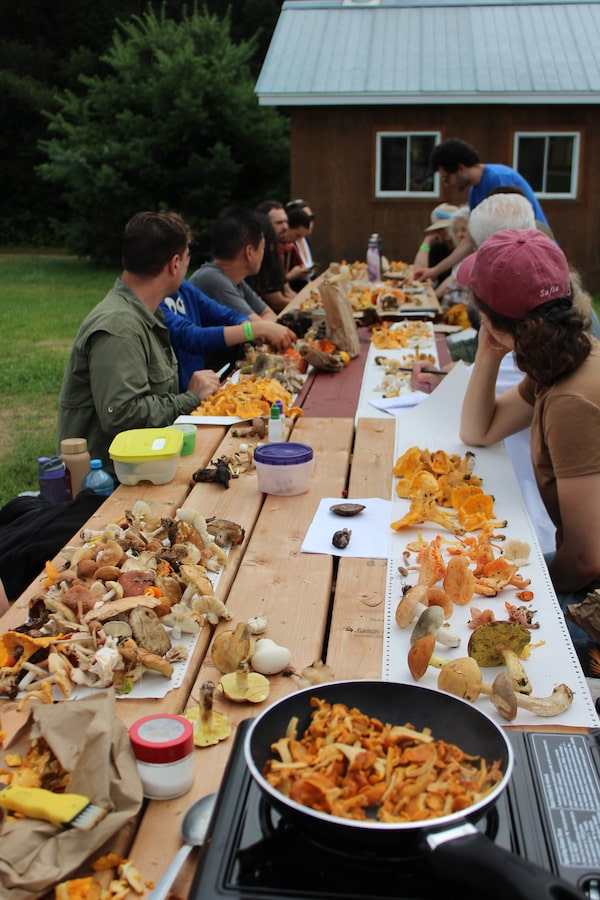
Mycoboutique offers French-speaking mushroom-hunting excursions to various areas around Montreal.Mycoboutique
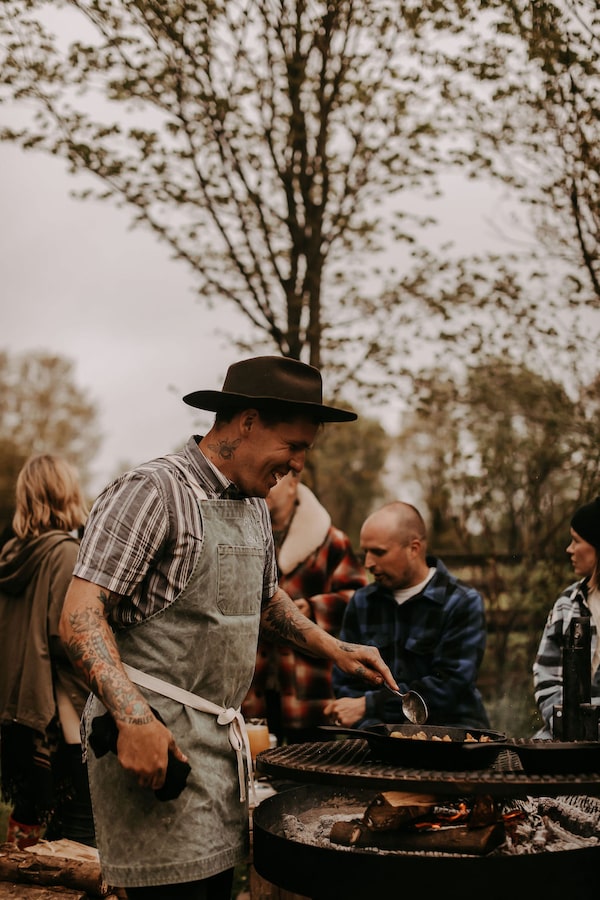
Sumac & Salt in Markdale, Ont., offers a 10-course tasting-style menu that uses foraged ingredients.Handout
Upper Humber Settlement Cormack, N.L.
On the west side of Newfoundland, Upper Humber Settlement’s Farm and Forage experience offers a taste of local wildflowers, berries, mushrooms and wild game. There are also berry-picking and jamming workshops and a three-day farm stay for foodies. From $75 a person, March and May-October. upperhumbersettlement.ca
Anishinaabe Wild Rice Experience Whitefish Lake, Ont.
Move off the land and onto the water 65 kilometres southwest of Thunder Bay with this family-owned business that teaches groups how to harvest wild rice in the shallow depths of small lakes. The two-day experience includes canoes, lunch and supplies for harvesting. $350 a person (for groups of 20 people) from August to October. wildriceexperience.com
Mycoboutique Montreal
From summer into fall, this family-owned shop offers French-speaking mushroom-hunting excursions to various areas around Montreal: the Laurentians, Eastern Townships etc. They also offer a two-day mushroom-foraging course. May to September, $95 a person. mycoboutique.com
Down Home by Sumac & Salt Markdale, Ont.
This farm/restaurant offers a 10-course tasting-style menu that uses ingredients foraged from the local area, plus food from the on-site garden and from small-scale businesses in Grey County, Ont. There is one seating an evening. Fridays, Saturdays and the occasional Thursday, year-round, $175 a person. sumacandsalt.com
Warrior Women Jasper, Alta.
This plant walk through Jasper National Park is led by Cree knowledge keeper Matricia Bauer, who runs the company with her daughter Mackenzie. The first hour focuses on plant exploration and then there’s a half-hour of medicine-making, creating salves, lotions and soaps. Runs year-round, $45 a person. warriorwomen.ca